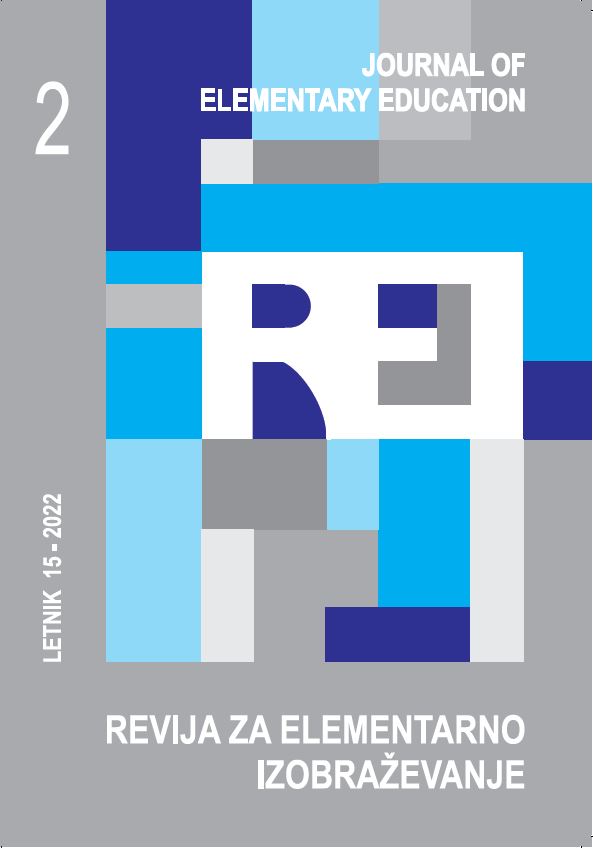The Relationship Between Intercultural Sensitivity, World Music Preferences and Preferences for Visual Artwork from Other Cultures
DOI:
https://doi.org/10.18690/rei.15.2.165-180.2022Keywords:
intercultural sensitivity, preference for world music, preference for artwork from different cultures, teaching music, teaching visual arts and fine artsAbstract
The results do not confirm the influence of the type of secondary education completed on intercultural sensitivity, world music preferences or on preferences for visual artwork from different cultures. Neither was the influence of participants’ year of study on their level of intercultural sensitivity confirmed, but we did confirm that older students show greater preferences for world music and visual artwork from different cultures when compared to younger students. Furthermore, the study confirmed a connection between intercultural sensitivity, on the one hand, and preferences for world music and visual artwork from different cultures, on the other.
Downloads
References
Cabedo, A. (2017). The Role of the Arts in Education for Peacebuilding, Diversity and Intercultural Understanding: A Comparative Study of Educational Policies in Australia and Spain. International Journal of Education & the Arts, 18(11), 1–28.
Campbell, P. S. (2002). Music education in a time of cultural transformation. Music Educators Journal, 89(1), 27–32, 54. doi: 10.2307/3399881
Chalmers, F. G. (1996). Celebrating Pluralism: Art, education, and cultural diversity. Los Angeles: The Getty Education Institute for the Arts.
Chamorro-Premuzic, T., Burke, C., Hsu, A., and Swami, V. (2010). Personality Predictors of Artistic Preferences as a Function of the Emotional Valence and Perceived Complexity of Paintings. Psychology of Aesthetics Creativity and the Arts, 4(4),196-204. doi: 10.1037/a0019211
Chen, G. M., and Starosta, W. J. (1996). Intercultural communication competence: a synthesis. Communication Yearbook, 19(1), 353–383. doi: 10.1080/23808985.1996.11678935
Chen, G. M., and Starosta, W. J. (1998). A review of the concept of intercultural awareness. Human Communication, 2(1), 27–54.
Chen, G. M., and Starosta, W. J. (2000). The development and validation of the intercultural communication sensitivity scale. Human Communication, 3(1), 3–14.
Choi, J. (2010) Music Major Graduate Students’ Attitudes towards Multicultural Music and its correlation with Multicultural Music Preference. Journal of Music Education Science, 10, 81–94.
Cleriodu, K., and Furnham, A. (2014). Personality Correlates of Aesthetic Preferences for Art, Architecture, and Music. Empirical Studies of the Arts, 32(2), 231–255. doi: 10.2190/EM.32.2.f
Čerkez. B. T. (2017). Interculturalism in art education: presenting Latin american culture through music and visual art. Revista Espaço Pedagógico, 15(2), 17. doi: 10.5335/rep.v15i2.7463
Da Silva, J. L., and Villas-Boas, M. A. (2006). Research note: Promoting intercultural education through art education. Intercultural Education, 17(1), 95–103. doi: 10.1080/14675980500502495
Delacruz, E. M. (1996). Approaches to Multiculturalism in Art Education Curriculum Products: Business as Usual. The Journal of Aesthetic Education, 30(1), 85–97. doi: 10.2307/3333235
Dobrota, S. (2016). Povezanost između interkulturalnih stavova studenata i preferencija glazbi svijeta. Život i škola: časopis za teoriju i praksu odgoja i obrazovanja, 62(1), 209–218.
Fung, C. V. (1994). Undergraduate Nonmusic Majors’ World Music Preferences and Multicultural Attitudes. Journal of Research in Music Education, 42(1), 45–57. doi: 10.2307/3345336
Fung, V. (1995). Rationales for music teaching world musics. Music Educators Journal, 82(1), 36–40. doi: 10.2307/3398884
Hargreaves, D. J. and North, A. C. (2001). (Eds.) Musical Development and Learning: The international perspective. London: Continuum.
Howard, K. (2018). The Emergence of Children’s Multicultural Sensitivity: An Elementary School Music Culture Project. Journal of Research in Music Education, 66(3), 261–277. doi: 10.1177/0022429418784594
Kardum, G., Kuščević, D., and Brajčić, M. (2020). The Impacts of Different Sorts of Art Education on Pupils’ Preference for 20th-Century Art Movements. Education Sciences, 10(1), 1–13. doi: 10.3390/educsci10010015.
Kim, M., and Yoon, M. (2016). Research on the Multicultural Music Education at the College Level. International Journal of Humanities and Social Sciences, 5(9), 290–299.
Kuščević, D., Brajčić, M., and Tomašević, N. (2020). Medkulturnost pri pouku – učenčeve preference likovnih del. Pedagoška obzorja, 35(1), 56–71.
Ninčević, N. (2009). Interkulturalizam u odgoju i obrazovanju: drugi kao polazište. Nova prisutnost, 7(1), 59–84.
Park, J., Shimojo, E., and Shimojo, S. (2010). Roles of familiarity and novelty in visual preference judgments are segregated across object categories. Proceedings of the National Academy of Sciences, 107(33),14552–14555. doi: 10.1073/pnas.1004374107
Petrović, D., and Zlatković, B. (2009). Intercultural Sensitivity of Future Primary School Teachers. In Popov, N. et al. (Eds.) Comparative Education, Teacher Training, Education Policy, Social Inclusion and Child Psychology, 7, 121–128.
Portalla, T., and Chen, G. M. (2010). The Development and Validation of the Intercultural Effectiveness Scale. Intercultural Communication Studies, 19(3), 21–37.
Sablić, M. (2014). Interkulturalizam u nastavi. Zagreb: Naklada Ljevak.
Schmidt, P. and Abramo, J. (2020). Policy, Interculturality and the Potential of Core Practices in Music Teacher Education. In H. Westerlund, S. Karlsen and H. Partti (Eds.) Visions for Intercultural Music Teacher Education. Cham: Springer Open, 1-12. doi: 10.1007/978-3-030-21029-8_13
Song, J., Kwak, Y., and Kim, C.-Y. (2018). The effect of familiarity and novelty on preference of paintings modulated by complexity and categories. Journal of Vision, 18(10), 405. doi: 10.1167/18.10.405
Swanwick, K. (1988). Music, Mind, and Education. London: Routledge.
UNESCO (2010). Seoul Agenda: Goals for the development of arts education. Paper presented at The Second World Conference on Arts Education, Seoul, the Republic of Korea, on 25–28 May 2010.
Walker, R. (1996). Multiculturalism in the teaching of music. In V. D’Oyley and S. M. Shapson. Innovative Multicultural Teaching. Toronto, Kagan & Woo, 72–91.
Westerlund, H., Karlsen S., and Partti, H. (2020). Introduction. In H. Westerlund, S. Karlsen and H. Partti (Eds.) Visions for Intercultural Music Teacher Education. Cham: Springer Open, 1–12. doi: 10.1007/978-3-030-21029-8_13
Downloads
Published
Issue
Section
License
Copyright (c) 2022 Snježana Dobrota, Marijo Krnić, Marija Brajčić

This work is licensed under a Creative Commons Attribution 4.0 International License.
